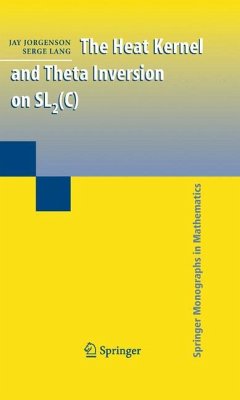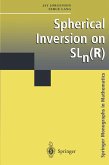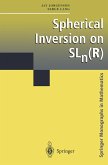The purpose of this text is to provide a self-contained development of the trace formula and theta inversion formula for SL(2,Z[i])\SL(2,C). Unlike other treatments of the theory, this one begins with the heat kernel on SL(2,C) associated to the invariant Laplacian, which is derived using spherical inversion.
The present monograph develops the fundamental ideas and results surrounding heat kernels, spectral theory, and regularized traces associated to the full modular group acting on SL2(C). The authors begin with the realization of the heat kernel on SL2(C) through spherical transform, from which one manifestation of the heat kernel on quotient spaces is obtained through group periodization. From a different point of view, one constructs the heat kernel on the group space using an eigenfunction, or spectral, expansion, which then leads to a theta function and a theta inversion formula by equating the two realizations of the heat kernel on the quotient space. The trace of the heat kernel diverges, which naturally leads to a regularization of the trace by studying Eisenstein series on the eigenfunction side and the cuspidal elements on the group periodization side. By focusing on the case of SL2(Z[i]) acting on SL2(C), the authors are able to emphasize the importance of specific examples of the general theory of the general Selberg trace formula and uncover the second step in their envisioned "ladder" of geometrically defined zeta functions, where each conjectured step would include lower level zeta functions as factors in functional equations.
The present monograph develops the fundamental ideas and results surrounding heat kernels, spectral theory, and regularized traces associated to the full modular group acting on SL2(C). The authors begin with the realization of the heat kernel on SL2(C) through spherical transform, from which one manifestation of the heat kernel on quotient spaces is obtained through group periodization. From a different point of view, one constructs the heat kernel on the group space using an eigenfunction, or spectral, expansion, which then leads to a theta function and a theta inversion formula by equating the two realizations of the heat kernel on the quotient space. The trace of the heat kernel diverges, which naturally leads to a regularization of the trace by studying Eisenstein series on the eigenfunction side and the cuspidal elements on the group periodization side. By focusing on the case of SL2(Z[i]) acting on SL2(C), the authors are able to emphasize the importance of specific examples of the general theory of the general Selberg trace formula and uncover the second step in their envisioned "ladder" of geometrically defined zeta functions, where each conjectured step would include lower level zeta functions as factors in functional equations.
From the reviews:
"The book under review ... provides an introduction to the general theory of semisimple or reductive groups G, with symmetric space G/K (K maximal compact). ... It is ... meant for experienced insiders, even as the presentation of the material is excellent and accessible. A well-prepared graduate student would do well with this book. More experienced analytic number theorists will find it enjoyable and spellbinding. ... I heartily recommend to other analytic number theorists of a similar disposition." (Michael Berg, MAA Online, December, 2008)
"This book is part of a program of the authors to develop a systematic theory of theta and zeta functions on homogeneous spaces, using techniques of harmonic analysis and, in particular, heat kernels. ... the book includes many details that would likely have been left for the reader to work out by her/himself in a more streamlined monograph. ... all in all, an enjoyable book to read." (Fredrik Strömberg, Zentralblatt MATH, Vol. 1192, 2010)
"The book under review ... provides an introduction to the general theory of semisimple or reductive groups G, with symmetric space G/K (K maximal compact). ... It is ... meant for experienced insiders, even as the presentation of the material is excellent and accessible. A well-prepared graduate student would do well with this book. More experienced analytic number theorists will find it enjoyable and spellbinding. ... I heartily recommend to other analytic number theorists of a similar disposition." (Michael Berg, MAA Online, December, 2008)
"This book is part of a program of the authors to develop a systematic theory of theta and zeta functions on homogeneous spaces, using techniques of harmonic analysis and, in particular, heat kernels. ... the book includes many details that would likely have been left for the reader to work out by her/himself in a more streamlined monograph. ... all in all, an enjoyable book to read." (Fredrik Strömberg, Zentralblatt MATH, Vol. 1192, 2010)









